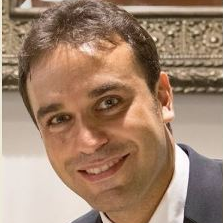Cloud Security in the Age of IoT
A special issue of Electronics (ISSN 2079-9292). This special issue belongs to the section "Computer Science & Engineering".
Deadline for manuscript submissions: closed (1 September 2022) | Viewed by 5903
Special Issue Editors
Interests: cloud security; IoT security; security service level agreements; security evaluation and security assessment; moving target defense
Special Issues, Collections and Topics in MDPI journals
Interests: IoT; critical requirements; model-driven; system modeling; formal assessment; simulation
Special Issues, Collections and Topics in MDPI journals
Special Issue Information
Dear Colleagues,
The Internet of Things (IoT) paradigm, together with cloud and edge/fog computing, is today at the basis of many activities we carry out in everyday life. All these technologies, which are rapidly spreading in the current IT landscape, allow for the management and processing of different types of data, often personal and sensitive, and involve devices ranging from objects we deal with every day (e.g., smartphones, fridges, washing machines) to modern industrial equipment (e.g., smart monitoring systems, video surveillance). The massive employment of these devices introduced new issues related to resiliency, efficiency, and infrastructure and data protection. In order to cope with existing security requirements, novel solutions and approaches must be devised for the development, management, and protection of these emerging distributed computing systems. This Special Issue will be a forum to share both ideas and approaches to improve cloud security as well as concrete experiences specifically addressing security in IoT. In this context, we are envisaging works covering one or more of the following topics:
- IoT secure applications taking advantage of cloud computing;
- Emerging problems and recent trends in the field of IoT, fog, and edge computing;
- Distributed architectures in support of IoT security;
- Confidentiality, integrity and privacy for public, private, and hybrid clouds;
- Trust in IoT applications;
- Models and technologies for security management, configuration, and accounting;
- Security issues including secure communications and strategies to detect and mitigate attacks;
- Model-based analysis and security assessment;
- Simulation
Dr. Alessandra De Benedictis
Dr. Roberto Nardone
Guest Editors
Manuscript Submission Information
Manuscripts should be submitted online at www.mdpi.com by registering and logging in to this website. Once you are registered, click here to go to the submission form. Manuscripts can be submitted until the deadline. All submissions that pass pre-check are peer-reviewed. Accepted papers will be published continuously in the journal (as soon as accepted) and will be listed together on the special issue website. Research articles, review articles as well as short communications are invited. For planned papers, a title and short abstract (about 100 words) can be sent to the Editorial Office for announcement on this website.
Submitted manuscripts should not have been published previously, nor be under consideration for publication elsewhere (except conference proceedings papers). All manuscripts are thoroughly refereed through a single-blind peer-review process. A guide for authors and other relevant information for submission of manuscripts is available on the Instructions for Authors page. Electronics is an international peer-reviewed open access semimonthly journal published by MDPI.
Please visit the Instructions for Authors page before submitting a manuscript. The Article Processing Charge (APC) for publication in this open access journal is 2400 CHF (Swiss Francs). Submitted papers should be well formatted and use good English. Authors may use MDPI's English editing service prior to publication or during author revisions.
Keywords
- Edge/fog/cloud distributed computing for IoT
- IoT data privacy
- Cloud Security
- Formal assessment
- Model-based






